Our 2009 Honda CRF450R ran under the radar for the last half of last year working its way well above 120 hours. And that is the sign of a really good machine. It is the opposite of how you hear about problems and issues; after all, people like controversy. And for sure right from its introduction this bike started on the hot seat. Funny how it all got quiet after Honda owners settled in with their machines and kept on riding. Just like us.Being such a drastic change from its CRF predecessors, especially in the handling department, the 2009 was a science experiment for many; either taking them to the next generation of MX handling or being modified into something that would make each rider happy. Since it was our job to test a lot of the modifications available at some time or another, we definitely played with our fair share of triple clamps and various suspension configurations. We finally settled with a Ride Engineering 22mm-offset triple clamp and found it relaxed the handling without losing much, or anything for some riders, in turning feel. We bounced around on suspension tuning with a set of revalved stock suspension components (set very similar to 2010 CRF450 settings) and a Fox Shox rear shock and modified matching fork combo. Both had some advantages, neither was universally liked by all riders-once again proving how personal suspension is. Especially the Fox setup that rode notably lower in the rear and had a slower rebound feel than most riders preferred-then again, that was a setup for a particular rider.Our maintenance on the motor was about as minimal as you could imagine for a motocross bike. Remember: The bike started its Long Haul life as Chris Barrett's supercross practice bike and actually raced in one of the muddy rounds. At 40 hours we threw a piston in (at the same time we did the camshaft pin recall). It didn't really need the piston swap, and that is why we never thought about the top end for the next 100 hours we rode the bike. But some things to note when doing a top end: Do not let the coil mounting bracket rotate "downward" as it will touch the radiator and cause a leak. Also, the ground wires that are under one of the coil bolts can "wind" up and break if you are not careful. The symptom that this wire is broken is an engine miss.The valves were adjusted once and then never moved. We did check them frequently, and that is not as easy as it used to be on older CRFs as the work space got a little tighter and there are a few extra wires in the way of getting to the business. We were good about keeping fresh Honda HP4 in the engine and also never let any dirt get past the air filter; those are the two golden rules for our success. Modification-wise, we programmed an ignition/fuel map that was a little more reluctant to stalling and pulled better on the very top-end, and once we got that, we never messed with the Honda ECU tuner again. We also tried a throttle body modification from Injectioneering (www.injectioneering.com). They replace the butterfly valve with one that is cut differently and then recalibrate the throttle position sensor. This helped the starting and really minimized stalling as well as gave the bottom-end a torqueier feel to about half throttle. Later in life a Trail Tech heavy flywheel snuck its way into the engine and was surprisingly subtle for such a weight increase.
The only thing we really kept playing with in the engine was the clutch. We tried two styles of Hinson setups (four-spring and six-spring), and they were both very solid but didn't offer a huge difference over standard, and plate wear was similar as well. We did have very good luck with a Barnett Dirt Digger clutch kit that outlasted stock and had a better feel due to different springs. We also spent a fair amount of time with the Rekluse EXP and Core clutch on the bike. The EXP anti-stall was incredible for those who liked it, and the Core clutch was good as well, but both of the Rekluse setups take a bit more attention in setup and tuning to keep them on top of their game. For exhaust we spent most of the year with the Pro Circuit system on the bike, though more aggressive riders preferred the Yoshimura system. A few preferred the stock pipe or, for even smoother, quieter and more mellow delivery, an FMF Q slip-on muffler.We went through a few sets of brake pads, replaced with stock Honda parts once then with Renthal pads which gave the bike a bit more grab at the cost of slightly quicker wear. The chain and sprocket was replaced with a Renthal TwinRing sprocket and Renthal O-ring chain, so we would not have to worry about it again. The sprocket initially dished the steel teeth but then never showed much wear after that. The chain only needed adjusting twice. We've heard of some riders having issues with the fuel filter inside the gas tank on the pump getting dirty and clogging, but ours was not dirty at all.About halfway through the year we ordered a fresh set of plastic and matched it with a RidePG.com graphics kit to make the bike look like new again. Of course, since I was riding it the most, it was my number. The kit was still looking good 70 hours later.The way everything was still in great shape as we tore the bike apart was impressive. Honda uses the right sized bolts in high-traffic areas, and it shows after a year of excessive abuse that a test bike takes. Through pipe comparisons, swapping plastic quite a bit, the random tear-apart for tech stories and the general neglect an "it's-not-my-bike" bike takes, we saw what stood up to the test of time at an accelerated rate. Little things like the airbox seams staying tight, and the shifter and brake pedals not getting loose or sloppy speak to strong durability. The bearings in the shock linkage and swingarm pivot seem to keep water and debris out and grease in as well. We had a couple of air filters we were swapping between, but the stock Honda filter is one of the most durable. Internally the engine still looked like it was brand-new and ready for another 150 hours, kind of a shame the bike was headed to the crusher (don't ask, it has to do with import issues). In reality, we lost track of the modifications cost on this bike since we were swapping so many parts and the regular maintenance was being done at the same time by a number of riders, so that figure went out the window, too. But if we had to compare the cost of keeping a Honda running, we'd say it is among the lowest out there as overall quality and durability are very high. Often I'm the first guy to say I'd wait a year on an all-new bike in case something goes wrong with the unproven design. I'm reluctant to risk potential big issues to get the benefits of the newer, superior performance. Well, it seems most of our Long Haul bikes lately have been the newest machines and, like this Honda, they have been proving my above concerns wrong. That is a really good thing. Now I need to go ride the 2010 YZ450F more!
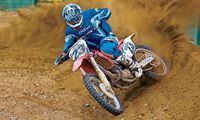
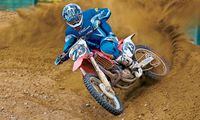

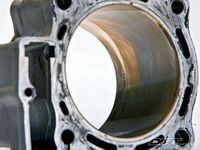
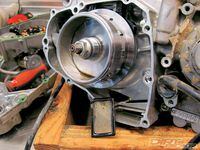
/cloudfront-us-east-1.images.arcpublishing.com/octane/QIHVKX7K6RBAFMHZCZYLJ3RDHU.jpg)
/cloudfront-us-east-1.images.arcpublishing.com/octane/OZ6NGNKQRNCQ7HO4EHIX5S32RQ.jpg)
/cloudfront-us-east-1.images.arcpublishing.com/octane/NJWC3JHMCZBCTGMC7XSQ4HXDDY.jpg)
/cloudfront-us-east-1.images.arcpublishing.com/octane/W2WMWDRFVJD6HP4XCRFISKUVLI.jpg)
/cloudfront-us-east-1.images.arcpublishing.com/octane/FUUS4XCVVZHYLBVJDLUGRT7RZQ.jpg)
/cloudfront-us-east-1.images.arcpublishing.com/octane/FSUTQ6NZ7RCO3M4NCBRJPKNM5M.jpg)
/cloudfront-us-east-1.images.arcpublishing.com/octane/XAZ2DGYTEJA2BE2TQ6H3KWXW4U.jpg)
/cloudfront-us-east-1.images.arcpublishing.com/octane/WC2HVBKSHNEJBODES2R5Y53VRY.jpg)
/cloudfront-us-east-1.images.arcpublishing.com/octane/JRSZS66MQBDH7O2JNMJHBQKIA4.jpg)
/cloudfront-us-east-1.images.arcpublishing.com/octane/WM3CKNM255E7NLISG3J5SOU63Y.jpg)
/cloudfront-us-east-1.images.arcpublishing.com/octane/XP5WDDR2AVGR3BF5S6TPCGYJ5A.jpg)
/cloudfront-us-east-1.images.arcpublishing.com/octane/7UAIG5GYLZH7LD72MKUYIHQYWU.jpg)
/cloudfront-us-east-1.images.arcpublishing.com/octane/6KXNSCIBK5BUNIJXUUELRO5W5Q.jpg)
/cloudfront-us-east-1.images.arcpublishing.com/octane/ZEQ7DSS7ZJCSLDAPECTSOAOGXI.jpg)
/cloudfront-us-east-1.images.arcpublishing.com/octane/OFSXJJ5PZFEZ5D5ZPMCFVHJUMA.jpg)
/cloudfront-us-east-1.images.arcpublishing.com/octane/N2JLNLG44VEKBMEPORRDTMX5A4.jpg)
/cloudfront-us-east-1.images.arcpublishing.com/octane/EOERU244ONEWVKQ7C24OHMRVWY.jpg)
/cloudfront-us-east-1.images.arcpublishing.com/octane/JF4T3ULTGNHTVEKSTNKLJ2IGKY.jpg)
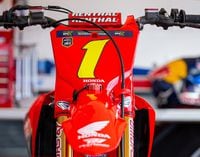
/cloudfront-us-east-1.images.arcpublishing.com/octane/FAOZEEEXFVA3ZK2PYMY3DHI2EQ.jpg)
/cloudfront-us-east-1.images.arcpublishing.com/octane/WCAUGYKA5FDZTB64FM36LJFMMM.jpg)
/cloudfront-us-east-1.images.arcpublishing.com/octane/EIDVOIN5IJDMRIVS2VNTOOBVSA.jpg)
/cloudfront-us-east-1.images.arcpublishing.com/octane/5BSWCTPONFB3DJFRPJ34STZMR4.jpg)
/cloudfront-us-east-1.images.arcpublishing.com/octane/KSERUHQUTNHLBCWKXS2R3TYZHI.jpg)